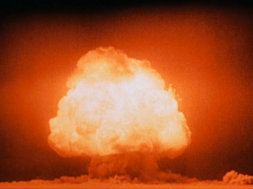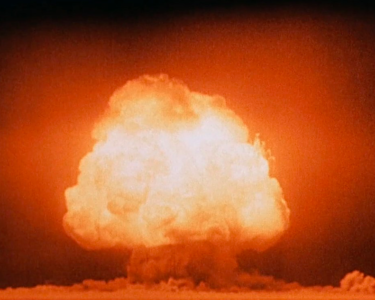In a documentary broadcasted by the BBC some time ago, the Chinese ambassador in Brazil sincerely admitted China’s intentions to become the world’s manufacturing center of any commodity. There’s surely nothing illegal in that. But it should be rather alarming for the rest of the world. And to achieve this, the Chinese empire will corner everywhere the raw materials it needs.
As an example, the Chinese authorities are investing millions of dollars in Brazil for constructing and renovating ports to access them with their cargo ships. These will then return to China loaded with iron ore which is very abundant in Brazil. But never enough for China.
You must keep in mind that the head of any Chinese plant operating anywhere in the world is just a manager. The chinese government remains its sole owner.
Fred Pearce in the 28 April issue of New Scientist, has put the emphasis on one of the most important raw materials. Or rather the most important: water.
The Tibetan plateau is the source of a handful of rivers which are the longest in the world and flow to several countries. China seems to want to exploit them alone taking advantage of its location.
One of the projects under development is the construction of two hydroelectric plants and the diversion of 40% of the flow of the Brahmaputra river for irrigation. If the matter consisted merely in the resulting ecological disaster (like the one happening to the Aral Sea thanks to Stalin’s irrigation plans) this would be no big deal. Unfortunately, India too is willing to exploit the river. Summing up the diverted flows of the river by both countries, for Bangladesh, which relies on the water especially during the dry season, very little would remain.
Another reason of conflict between China and India is the Bunji dam located 600 km from Islamabad on Pakistan’s northern border. India claims this territory as its own.
The reader will surely understand the possible scenarios and their consequences, as these contrasts are affecting a few billion people on our planet. And not to forget, powers with nuclear arsenals in their hands.
Leithen Francis in the October 17, 2011 issue of Aviation Week & Space Technology, tells us how China is causing a whole lot more than a bad mood in Vietnam and the Philippines for its bulky presence in the South China Sea. Bulky presence means trespassing – often with military ships – the territorial space of its neighboring countries. Such discontent led Vietnam to hold bilateral agreements with India, the Philippines and, surprisingly, even with the U.S. to develop military cooperation.
The Philippine government is seeking to increase its military budget especially for the marine patrol units through agreements with the U.S. The latest news report further tightening caused by repeated incursions into the South China Sea by some fish cutters protected by Chinese military ships during the last weeks. The consequences of this escalation are the order issued by the Chinese National Centre for Tourism stay to suspend travels to the Philippines, the anti-Chinese demonstrations in Manila, and a large sequence of further retaliatory actions and official fire statements from both sides.
That said, China’s commitment to build the necessary infrastructure for the pursuit of its goal and, more generally, in defending its interests, raises a certain level of admiration. Especially for those who are used to sterile political discussions leading to absence of clear and unambiguous decisions causing immobility of a once industrialized country’s economic system. Or for those who compare the images of street riots and demos against the construction of a few tens of kilometers of railway with the bitter realization that the world record for the length of the high-speed line is held by China with its over 9600 km.
The world map contained in the article “Material World” in the July / August 2011 issue of Technology Review depicting the extraction of rare-earth metals (among the others) is quite depressing too. For those whom this name does not say much: please take a look at your mobile phone, computer, or the wind turbines infesting our land with their majestic bulk and uselessness. Well, 97% of world production of these metals occurs in China. Its world monopoly is so well established that the American military industry is forced into a checkmate position from which it’s slowly trying to get out thanks to the mines reopening in the USA, Canada and Australia. According to the report “Critical Rare Earths” of August 2011, for the next 3-4 years China will preserve its monopoly position. The newly opened mines will participate more to the world production afterwards.
Western Europe appears not surprisingly entirely white in the above map with the exception of Germany, Belgium and Finland for their production of selenium and indium.
The reader might feel a bit envious while reading this list of the world’s most active container ports: among the top ten, six are within the Chinese territory. Only two European ports, Rotterdam and Hamburg, appear in the top twenty. Moreover the Fed has lately approved the possibility for the Industrial and Commercial Bank of China and other Chinese banks to acquire american banks.
Some readers might feel envious also about the Chinese commitments in providing electricity. While we engage ourselves in vicious contests to follow the path to happy degrowth by consuming less energy (to the point that some green politicians and some wannabe industrial policy makers insult some firms or business sectors calling them “energy devourer”), and by producing it in foolishly expensive and inefficient ways; while some are debating – often without any knowledge whatsoever on radiations – on the catastrophic health effects of nuclear power plants’ operations, besides the above-mentioned exploitation of hydro power, China keeps planning and installing them. The reader may want to check the World Nuclear Association site.
After the many years that China spent trying to imitate us – the Western world – is the time (finally) come for us to imitate China?






Comment(1)
Comments are closed.